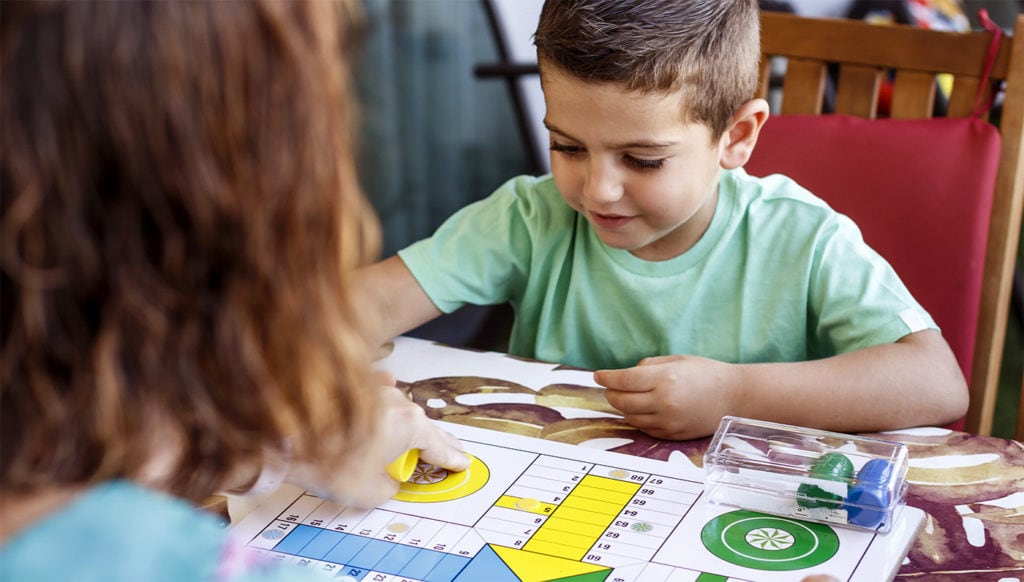Learning
How Board Games Help With Math At Home
Most children enjoy playing games with other family members. Playing mathematical games as a family allows for learning and consolidation to occur in a non-threatening atmosphere and also helps build positive attitudes and stronger self-esteem.
Board games are a useful way of developing many different mathematical ideas and skills with young children. They are particularly useful to give the necessary added practice needed by children with specific learning difficulties. However, it is important that the game is adapted to suit the specific needs of your child.
Well known commercial board games such as Snakes and Ladders, Ludo, Trouble and Headache can easily be adapted in a variety of ways to develop different basic number skills.
When playing the game according to the rules, using a normal die (that is, one with spots) young children are learning that for every ‘spot’ on the die, the player must move one place along the track. Mathematically this is known as one-to-one correspondence and is the foundation of all mathematics.
Being able to count the number in a group by matching a number name to each object, then realizing that the last number said is the number in the group is also an important early number idea. As children count the number of spots on the die, they are getting experience of this concept
Subitising (the instant recognition of the number of spots from the pattern, without counting) is another important mathematical skill. Again, playing games using different dice, gives children the opportunity to develop stronger subitising skills.
Placing stickers over the spots and then writing the required numerals on the stickers can alter existing dice. If preferred, buy blank dice, or make a deck of twenty cards from scrap cardboard with just numerals written on them (from 1 to 10), two of each card. These can be used instead of a die as this allows for all numerals 1 to 10 and all basic addition and subtraction facts to be practiced.
CAUTION: Do not use a pack of ordinary playing cards. This is because the pattern on the card does not match the number. For example, the seven of diamonds actually has nine diamonds on the card – seven large diamonds and two smaller ones, (one under each numeral). This can cause confusion for children still learning to “match” the total number of objects to the numeral.
Some Useful Variations:
- Using a die with spots develops basic one-to-one correspondence and subitising skills.
- Using a die marked with the numerals 1 to 6 (or cards) develops basic numeral recognition.
- Using a die marked with the numerals 6 to 10 and 0 (or cards) develops higher numeral recognition.
- Using a die marked with the numerals 1 to 6 (or cards 1 to 10), have players mentally “double” the number thrown/shown and move that number of places, to practice basic addition doubles.
- Using two dice, one marked 1 to 6 and one marked with spots, encourages the “counting on “ strategy as children need to start with the numeral and then “add on” the spots.
- Using a die marked with the numerals 1 to 6 (or cards), have players mentally add one to the number thrown.
- Using a die marked with the numerals 1 to 6 (or cards), have players mentally add two, then three to the number thrown.
- Using a die marked with the numerals 3 to 8 (or cards 3 to 10); players mentally subtract one, two, then three from the number.
- Using a die marked with the numerals 1 to 6 (or cards 1 to 10), players subtract the number shown from 10 and then move the “answer” number of places.
- Using two dice, one marked 0 to 5 and one marked 5 to 10, have players throw both dice, calculate the difference between them and move that number of places.
Contributions by: Val Badham and Paul Magaudda

